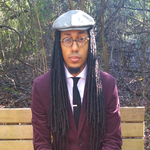The Usual Suspects: Police Violence, Black Homes, and the Next Episode
By D’Weston Haywood, Ph.D., Columnist
Details are forthcoming, though the storyline is familiar: white police officer kills an unarmed black person. We have seen this episode many times before, even as the settings and names of those involved change.
In this one, Dallas Police Officer Amber Guyger shot and killed Botham Shem Jean on September 6, 2018. The cast of usual suspects remains, including conflicting reports followed by the character assassination of the victim as the police close ranks.
Initially, there appears to be something new, one detail that does not seem to be something we have previously seen. Guyger shot Jean in his apartment, which she claims to have mistaken for her own, believing him to be an intruder.
“Home” is a place viewed by most Americans as an inviolable private space, while historically, Black people have long experienced “home” as anything but that. On the contrary, a home has been a space where race and violence intersect much like in public spaces.
The historical examples abound: Emmett Till was kidnapped from his uncle’s home in 1955 by two white men. Martin Luther King’s home was bombed during the Montgomery Bus Boycott by segregationists. As a child, Angela Davis’ father stockpiled weapons to defend their home in case racists attacked. Pogroms that decimated the homes and businesses of Black people in Tulsa, Oklahoma, in 1921, and in Rosewood, Florida, in 1923. Altogether, if we look closer, Guyger’s attack on Jean’s home is looking like another re-run.
A published police warrant states that investigators found a small amount of marijuana in Jean’s apartment though it is not yet clear to whom the substance belonged. However, again looking closer, this points to something with yet deeper historical roots—another repeat episode. This one features a well-worn historical construction that frames Black people as always criminal.
In the character assassinations that tend to follow the Black victims of police killings, this piece of information in the warrant helps “justify” Jean’s death in the popular imagination. Within the construct of the Black criminal, Black people deserve to die for even the smallest offenses—selling single cigarettes (Eric Garner, New York City); selling bootleg DVDs (Alton Sterling, Baton Rouge); and now, Botham Shem Jean in Dallas. Sometimes the offenses are simply perceived. Either way, the usual suspects return—the naturally-criminal Black person, lawless, deviant, always already criminal. If they have not committed a crime, then it is only a matter of time.
Guyger’s intrusion and bullets have forced Jean into a history he very likely would not have wanted to be a part of, one that collapses for Black people the public and private through ongoing racial violence, among other things. Some spokespersons for the National Rifle Association have even weighed in on the matter, though problematically. They insist that had Jean had a gun he could have defended himself and prevented his own death. Again, we have seen this episode too: a white police officer kills an armed black person. In both episodes, armed or unarmed, blame falls on the victim.
D’Weston Haywood is an assistant professor of History at the University of Louisiana at Lafayette. His research and teaching center on histories of Black protest, Black cultural politics, and Black masculinity. He is currently completing a historical monograph, Let Us Make Men: Black Newspapers and a Manly Vision of Racial Advancement.





